High schools across the nation take immense pride in graduates who achieve remarkable success—from professional athletes competing at the highest levels to CEOs leading Fortune 500 companies, from medical professionals saving lives to entrepreneurs building innovative businesses. Yet many schools struggle to effectively showcase these distinguished alumni in ways that inspire current students, engage the community, and strengthen institutional pride.
This comprehensive guide explores how high schools can build and showcase distinguished alumni networks and databases that celebrate successful graduates—from sports stars and entertainment figures to medical innovators and business titans. Whether your school has produced Olympic athletes, renowned surgeons, technology entrepreneurs, or community leaders, modern digital recognition platforms enable you to honor these achievements while inspiring the next generation of success stories.
Why Distinguished Alumni Networks Matter for High Schools
Before exploring implementation strategies, understanding the multifaceted value of alumni recognition programs provides essential context for prioritizing these initiatives.
Inspiring Current Students Through Real-World Examples
Students benefit immensely from seeing diverse pathways to success modeled by alumni who faced similar challenges and opportunities:
Career Pathway Visibility Distinguished alumni represent living case studies of what’s possible after graduation. When students see alumni who became professional athletes, they understand that sports excellence can lead to careers beyond high school. When they learn about alumni who founded successful businesses, entrepreneurship becomes tangible rather than abstract. Medical professional alumni demonstrate that science and caring can combine into meaningful careers saving lives.
Relatability and Connection Unlike distant celebrities or historical figures, alumni attended the same school, learned from similar teachers, and navigated comparable challenges. This proximity makes their success feel achievable rather than impossibly distant. Students can imagine themselves following similar paths because alumni started exactly where current students are now.
Diverse Definition of Success Comprehensive alumni databases showcase success across multiple dimensions—athletic achievement, academic excellence, business innovation, community service, creative arts, and professional distinction. This diversity ensures all students see themselves reflected in at least some honored alumni, regardless of their specific interests or career aspirations.
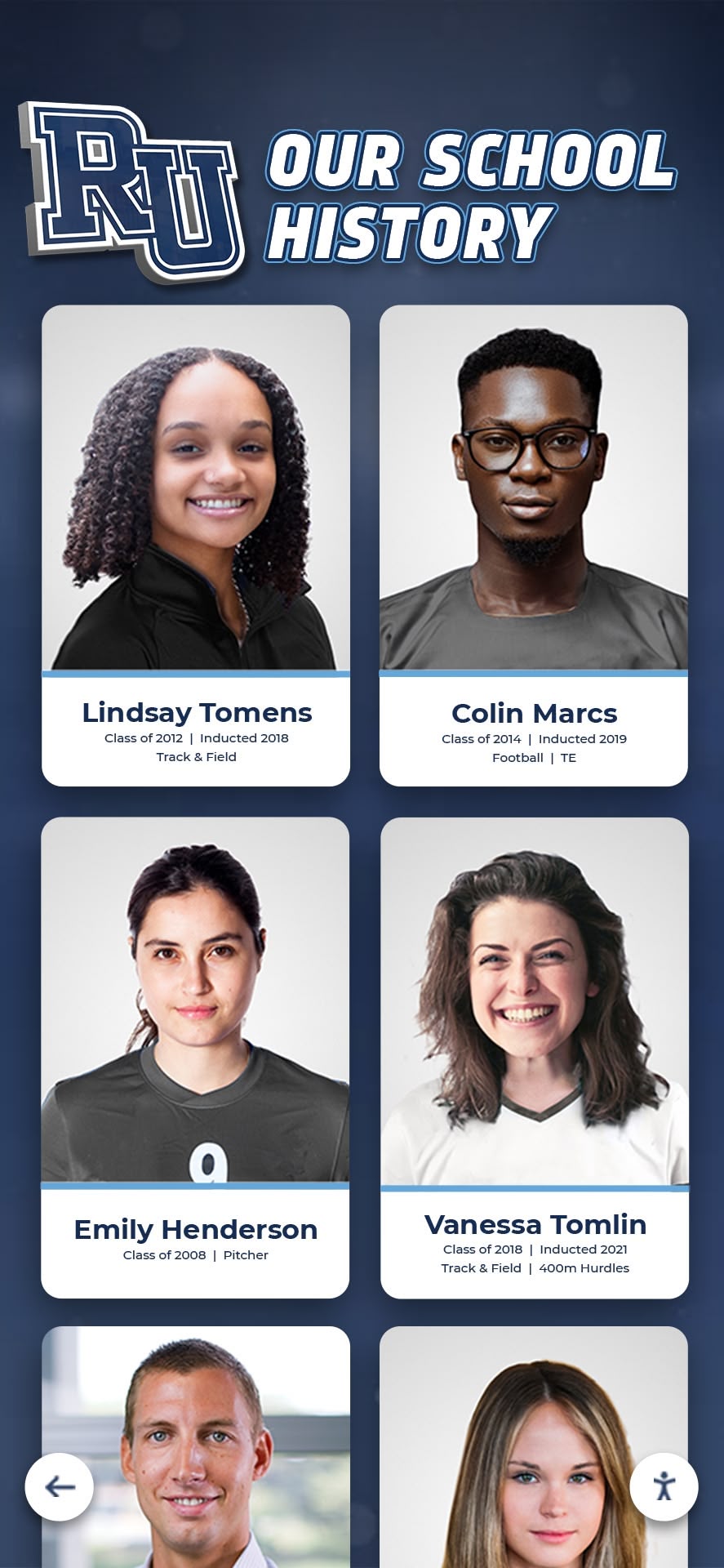
Strengthening School Pride and Community Connection
Alumni achievement reflects positively on educational institutions, creating pride cycles that benefit everyone:
Institutional Reputation Enhancement When communities learn about distinguished alumni, they associate that success with educational quality. Schools producing professional athletes, successful business leaders, and renowned professionals develop reputations as institutions preparing students for excellence. This enhanced reputation attracts families seeking quality education for their children.
Alumni Engagement and Giving Recognized alumni feel valued by their alma maters, strengthening emotional connections that often translate into increased support. Distinguished alumni frequently become mentors, guest speakers, internship providers, and philanthropic donors when schools honor their achievements appropriately. Recognition creates reciprocal relationships benefiting both schools and graduates.
Community Celebration Local communities take pride in hometown success stories. When high schools celebrate distinguished alumni, entire communities share that pride—attending induction ceremonies, following alumni careers, and supporting school programs. This community connection generates goodwill, volunteer support, and advocacy for educational funding.
According to research from advancement professionals, schools with active alumni engagement strategies report significantly higher participation in school events, increased volunteer rates, and stronger philanthropic support compared to institutions lacking systematic recognition programs.
Types of Distinguished Alumni High Schools Celebrate
Comprehensive alumni networks honor achievement across diverse categories, ensuring broad representation and inclusive definition of success.
Professional Athletes and Sports Stars
Athletic achievement represents one of the most visible forms of alumni success, inspiring student-athletes while celebrating competitive excellence.
Professional Sports Careers Alumni competing in professional leagues—NFL, NBA, MLB, NHL, MLS, WNBA, or international leagues—demonstrate the highest levels of athletic achievement. High schools producing professional athletes naturally celebrate these graduates, tracking their careers and sharing their accomplishments with current student-athletes.
Olympic and International Competition Olympians and international competitors represent pinnacle athletic achievement recognized globally. Schools fortunate enough to produce Olympic medalists or world championship competitors understandably feature these alumni prominently in recognition displays.
Collegiate Athletic Success Division I, II, and III college athletes, particularly those earning all-conference or all-American honors, merit recognition even if they don’t pursue professional careers. These alumni demonstrate how high school athletic programs prepare students for collegiate success.
Coaching and Athletic Leadership Alumni who become successful coaches, athletic directors, or sports administrators continue contributing to athletic excellence in new capacities. Their career paths show student-athletes that sports expertise can lead to diverse professional opportunities.
Schools implementing digital athletic recognition programs find that multimedia displays effectively showcase sports achievements through action photos, career statistics, highlight videos, and biographical narratives that inspire current athletes.
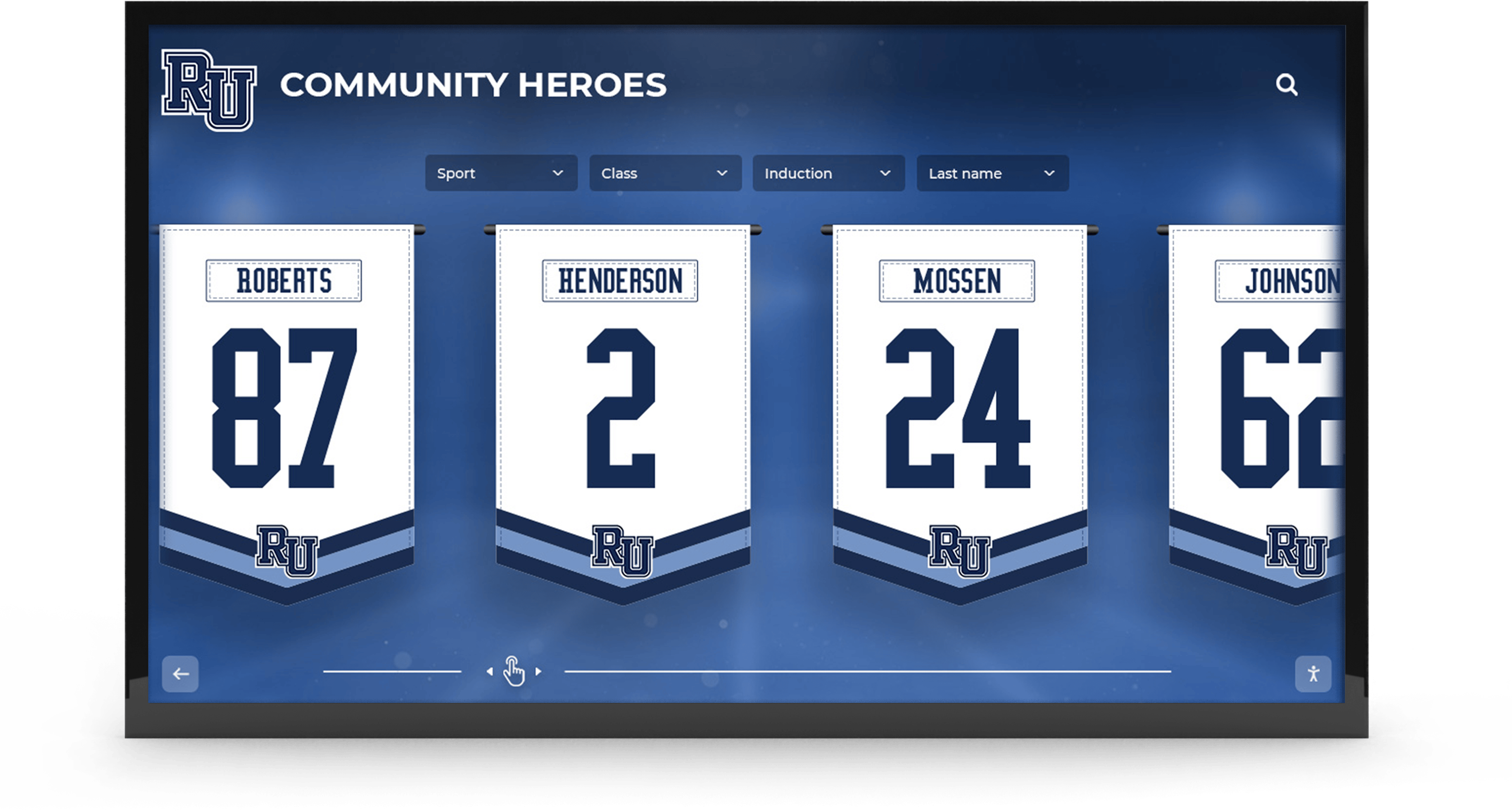
Business Leaders and Entrepreneurs
Corporate success and entrepreneurial achievement demonstrate how education translates into business innovation and economic impact.
Chief Executives and Corporate Leaders Alumni who become CEOs, presidents, or C-suite executives of major corporations represent business leadership at the highest levels. Their career trajectories from high school through professional achievement inspire students interested in business, management, and organizational leadership.
Successful Entrepreneurs and Founders Alumni who build successful companies—whether local small businesses, regional enterprises, or national corporations—exemplify entrepreneurial spirit and innovation. Their stories show students that business creation represents a viable career path combining creativity, risk-taking, and strategic thinking.
Industry Innovators Alumni who drive innovation within specific industries—technology pioneers, retail innovators, manufacturing leaders, or service industry entrepreneurs—demonstrate how specialized expertise creates competitive advantages. Their achievements inspire students to develop deep knowledge in fields they’re passionate about.
Nonprofit and Social Enterprise Leaders Business acumen applies beyond for-profit ventures. Alumni leading successful nonprofit organizations or social enterprises demonstrate how business skills create positive social impact. These leaders inspire students wanting to combine professional competence with meaningful community contribution.
Resources on showcasing alumni career achievements help schools effectively present business and entrepreneurial success through professional profiles, career timelines, and achievement documentation.
Medical Professionals and Healthcare Leaders
Healthcare careers represent some of society’s most respected professions, with alumni physicians, surgeons, researchers, and healthcare administrators serving communities locally and globally.
Physicians and Surgeons Alumni who become doctors across all specialties—family medicine, surgery, pediatrics, emergency medicine, psychiatry—save lives daily while exemplifying years of dedication to medical education and professional excellence. Their career paths inspire science-oriented students to pursue healing professions.
Medical Researchers and Scientists Alumni conducting groundbreaking medical research, developing new treatments, or advancing scientific understanding of diseases contribute to healthcare progress benefiting millions. These research-focused alumni show students how scientific curiosity translates into meaningful discovery.
Healthcare Administrators and Policy Leaders Alumni leading hospitals, healthcare systems, or health policy organizations demonstrate how medical knowledge combines with management expertise to improve healthcare delivery. Their careers appeal to students interested in health systems rather than direct patient care.
Nursing and Allied Health Professionals Alumni who become nurses, physician assistants, physical therapists, pharmacists, or other healthcare professionals provide essential medical services while exemplifying compassionate care. These diverse healthcare careers show multiple pathways into medical professions.
Academic Scholars and Educators
Alumni who pursue academic careers or educational leadership inspire students to value learning while demonstrating that teaching professions create lasting impact.
University Professors and Researchers Alumni who become college or university faculty members advance human knowledge through research while educating future generations. Their academic achievements demonstrate how intellectual curiosity becomes professional expertise.
School Administrators and Educational Leaders Alumni who return to education as principals, superintendents, or educational policy leaders improve schools and student outcomes. Their careers show students that educational leadership creates systemic positive change.
Teachers and Educators Alumni who become teachers at any level—elementary, secondary, or collegiate—shape future generations while pursuing personally meaningful careers. Celebrating educator alumni reinforces that teaching represents noble, impactful professional work.
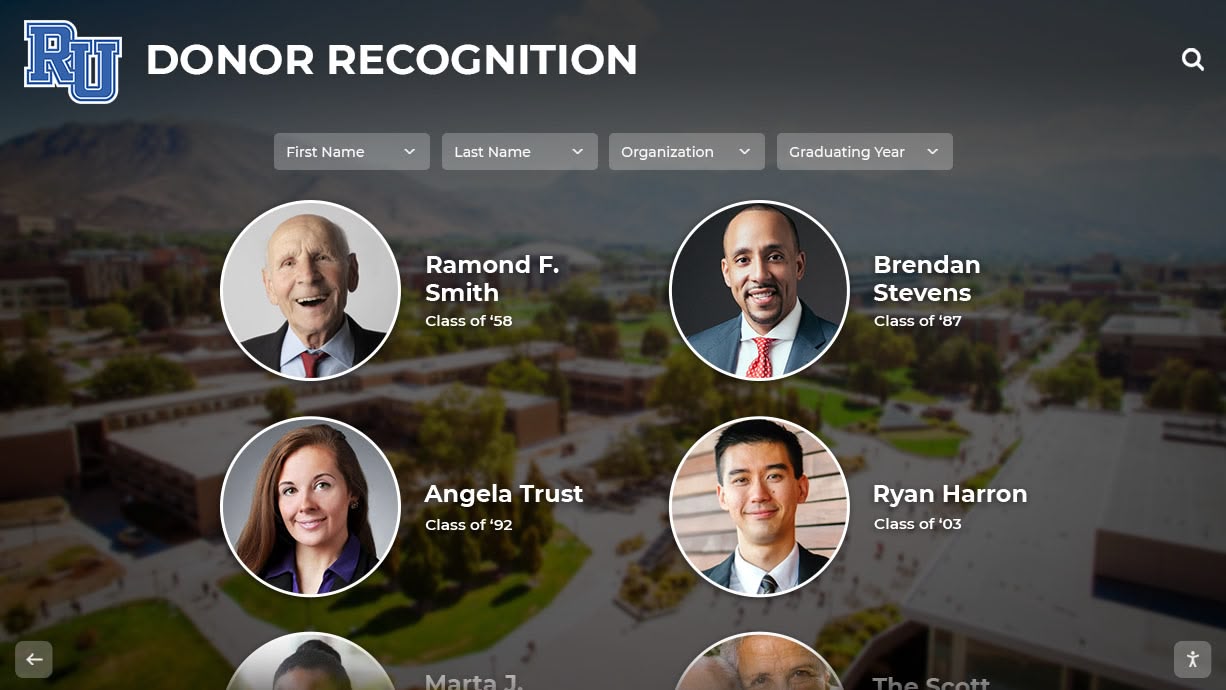
Government Officials and Public Servants
Alumni serving in government roles or public service positions demonstrate civic engagement and commitment to democratic institutions.
Elected Officials Alumni elected to local, state, or national office represent democratic leadership at various government levels. Their political careers inspire civically minded students to pursue public service through electoral politics.
Military Service and Leadership Alumni who serve in armed forces—particularly those achieving significant rank or receiving military honors—exemplify service, discipline, and sacrifice. Their military careers resonate strongly with patriotically oriented students and families.
Public Safety and Law Enforcement Alumni working as police officers, firefighters, emergency responders, or public safety administrators protect communities while demonstrating commitment to service professions. Their careers appeal to students wanting hands-on public safety roles.
Judges and Legal Professionals Alumni who become judges, prosecutors, defense attorneys, or legal scholars shape justice systems while exemplifying legal expertise and ethical reasoning. Their careers inspire students interested in law, justice, and advocacy.
Arts, Entertainment, and Creative Professionals
Alumni achieving success in creative fields demonstrate how artistic talent and dedication create professional opportunities in entertainment, media, and arts.
Performing Artists Alumni working as professional musicians, actors, dancers, or other performers show students that artistic passion can become viable careers. Their success validates creative pursuits often undervalued in academic contexts.
Visual Artists and Designers Alumni succeeding as visual artists, graphic designers, architects, or other creative professionals demonstrate how artistic vision translates into professional work. Their careers appeal to visually oriented students.
Writers and Journalists Alumni who become published authors, journalists, screenwriters, or other professional writers show how communication skills and storytelling ability create career opportunities. Their success inspires student writers and communicators.
Media Professionals and Content Creators Alumni working in television, film, digital media, or emerging content platforms exemplify how media literacy and creative skills adapt to evolving technology. Their contemporary careers resonate particularly with digitally native students.
Building Your Distinguished Alumni Database: Planning and Strategy
Successful alumni networks begin with careful planning addressing selection criteria, information gathering, and organizational structure.
Establishing Clear Recognition Criteria
Transparent selection standards ensure fairness while maintaining recognition program credibility:
Achievement Thresholds Define specific accomplishments qualifying alumni for recognition—professional sports participation, executive leadership positions, significant business success, professional licensure and distinction, notable creative or artistic achievements, or substantial community impact. Clear thresholds prevent arbitrary or inconsistent recognition decisions.
Time After Graduation Determine minimum years since graduation before alumni become eligible for recognition. Many schools require 5-10 years post-graduation, ensuring achievements represent sustained success rather than temporary accomplishments. However, exceptional early-career success (Olympic medals, startup unicorns, breakthrough discoveries) might warrant earlier recognition.
Ongoing Excellence vs. Peak Achievement Decide whether recognition requires sustained career excellence or can honor singular remarkable achievements. Both approaches have merit—sustained excellence rewards consistency while peak achievement celebrates exceptional moments.
Character and Institutional Representation Consider whether professional achievement alone suffices or if alumni must also demonstrate good character and positive institutional representation. Many schools include character clauses ensuring honored alumni exemplify institutional values beyond professional success.
Designing Nomination and Selection Processes
Structured processes maintain program integrity while encouraging broad community participation:
Nomination Sources Determine who can submit alumni nominations—current faculty and staff, fellow alumni, community members, students, or family members. Broader nomination sources increase candidate diversity while potentially requiring more selection committee time.
Required Documentation Create comprehensive nomination forms requesting detailed information—biographical data, graduation year and honors received, educational background including degrees earned, complete career history with dates, specific achievements and recognition received, supporting documentation, letters of recommendation, photos and media assets, and contact information for nominee outreach.
Selection Committee Composition Form diverse committees representing varied perspectives—school administrators, faculty members who taught nominees, alumni representatives, community members, board members, and potentially student representatives. Staggered committee terms ensure continuity while refreshing perspectives periodically.
Evaluation and Decision Criteria Establish structured review processes where committee members independently evaluate nominations, discuss nominees collectively, apply consistent criteria across all candidates, document decision rationales, and vote through defined procedures—simple majority, supermajority, or consensus.
Understanding how to create an alumni hall of fame provides comprehensive guidance on selection processes, committee structures, and criteria development.
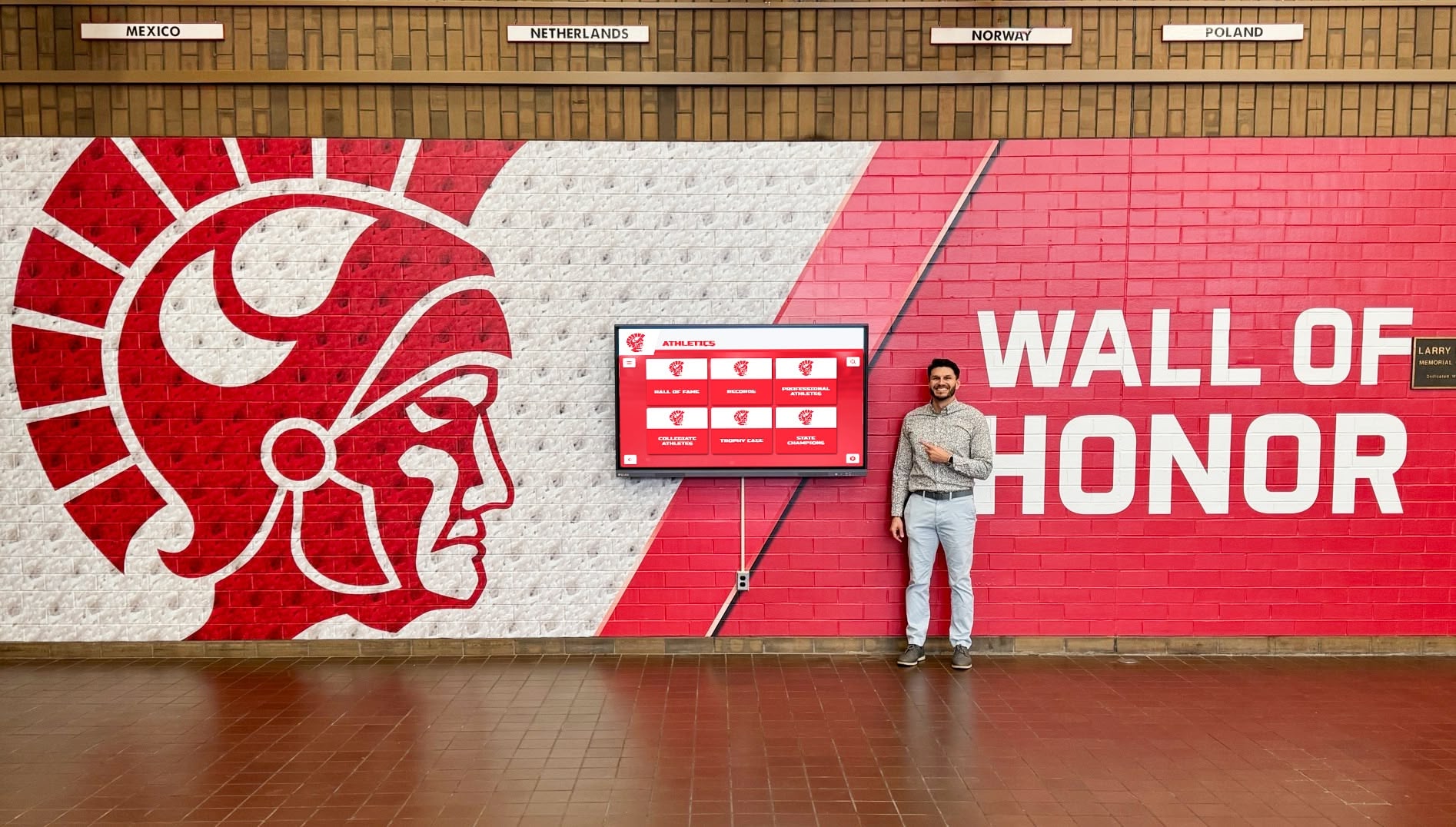
Information Gathering and Research Strategies
Comprehensive alumni profiles require systematic information collection:
Existing School Records Begin with institutional archives—yearbooks, academic records, athletic statistics, activity participation records, and any previous alumni recognition programs. These sources provide foundational biographical information and high school achievements.
Direct Alumni Outreach Contact living alumni directly requesting updated information, professional biography details, recent photos and videos, personal reflections on high school experience, advice for current students, and media release permissions. Personal outreach generates the most detailed and authentic information.
Public Information Research Supplement direct outreach with public research—professional biographies on company websites, LinkedIn profiles and career histories, news articles and press mentions, professional association directories, sports statistics databases, and social media profiles (with appropriate permissions).
Family and Colleague Contacts For deceased alumni or those unable to respond directly, contact family members, professional colleagues, or classmates who can provide biographical information and personal anecdotes. These secondary sources often yield compelling stories enriching profiles.
Fact-Checking and Verification Verify all information accuracy through multiple sources, cross-reference dates and facts, confirm professional titles and positions, and validate awards and recognition received. Thorough fact-checking prevents embarrassing errors while ensuring profile credibility.
Technology Platforms for Showcasing Distinguished Alumni
Modern digital solutions enable schools to showcase alumni achievements far more effectively than traditional physical displays alone.
Interactive Digital Recognition Displays
Physical touchscreen displays installed in prominent school locations create impressive, engaging alumni showcases:
Comprehensive Multimedia Profiles Digital displays accommodate extensive content impossible in traditional plaques—full biographical narratives, multiple high-resolution photos, video interviews and highlights, career timelines and progression, achievement documentation, and related news articles or media coverage.
Powerful Search and Discovery Visitors can quickly find specific alumni through searchable databases, browse by category (athletes, business leaders, medical professionals), filter by graduation year or era, explore random featured profiles, and discover alumni working in fields matching their interests.
Unlimited Capacity and Easy Updates Unlike physical plaques limited by wall space, digital systems accommodate unlimited alumni profiles. Adding new honorees requires simple content uploads rather than ordering new plaques, renovating displays, or relocating existing recognition.
Engagement Analytics Digital platforms provide valuable data about which alumni profiles generate most interest, popular search terms indicating visitor priorities, peak usage times and visit patterns, and overall engagement levels informing content priorities.
Solutions like Rocket Alumni Solutions provide purpose-built platforms specifically designed for educational recognition, combining commercial-grade touchscreen hardware with intuitive content management systems requiring no technical expertise to operate.
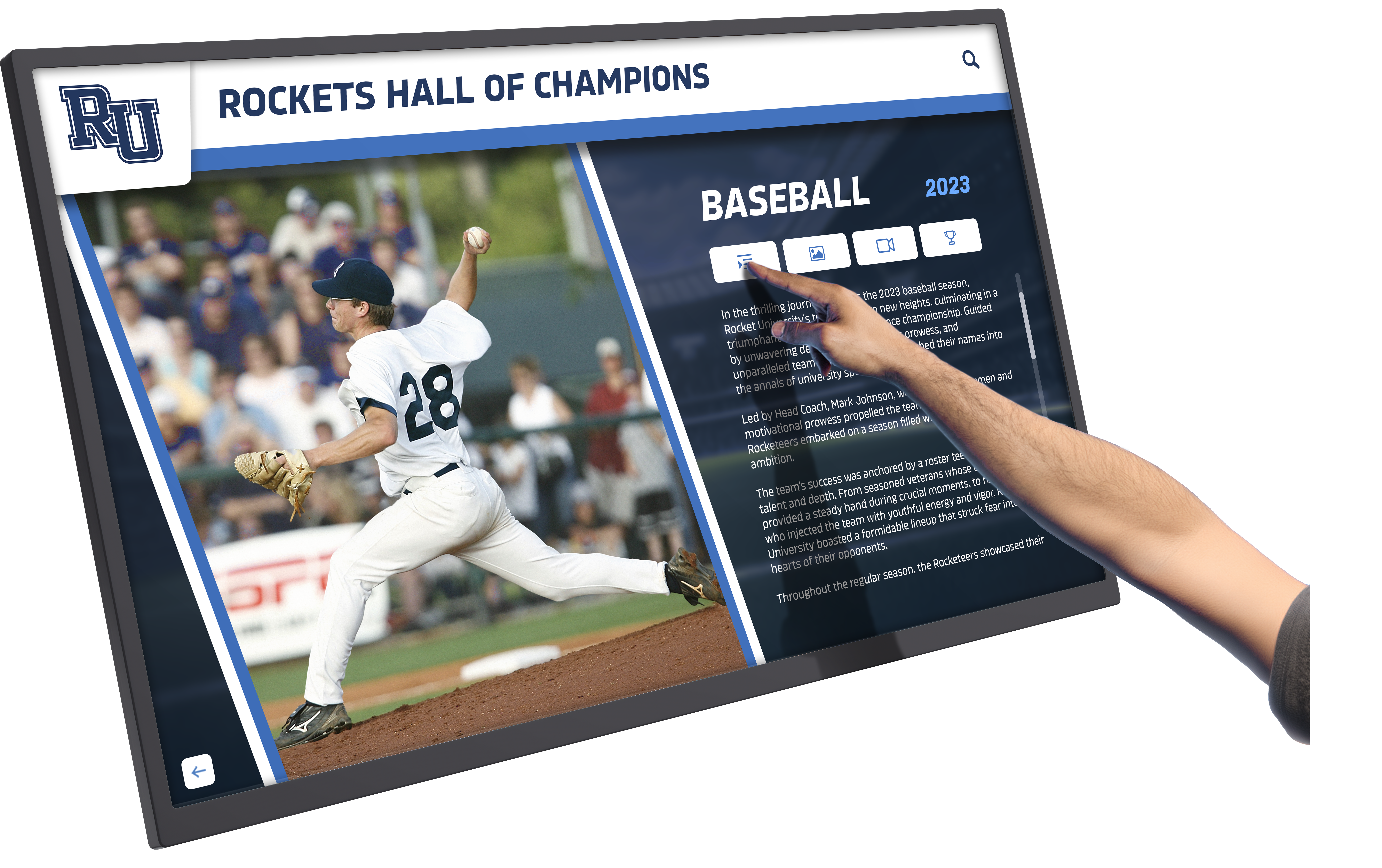
Online Alumni Directories and Websites
Web-based platforms extend alumni recognition beyond physical school locations, enabling global access:
Worldwide Accessibility Online hall of fame websites allow alumni anywhere in the world to view recognition content from computers or smartphones. This accessibility multiplies effective audience size by 100x or more compared to physical-only displays.
Social Sharing Capabilities Web platforms enable easy sharing across social networks, email distribution to family and friends, linking from professional profiles like LinkedIn, and embedding in personal websites or blogs. Each share extends recognition visibility exponentially.
Search Engine Visibility Properly optimized online alumni content appears in Google searches when people research school history, look up specific alumni names, or explore local distinguished graduates. Search visibility attracts audiences who wouldn’t otherwise discover alumni achievements.
Integration with School Websites Alumni recognition seamlessly integrates with main school websites, prospective student information, development and fundraising pages, and athletic department content. This integration ensures alumni achievements support multiple institutional priorities simultaneously.
Hybrid Approaches Combining Physical and Digital
The most effective recognition programs leverage both physical displays and online platforms, creating complementary experiences:
Physical Displays as Gateway Prominent hallway displays capture attention of students, staff, and visitors who naturally encounter them during daily campus activities. These displays serve as gateways directing audiences to comprehensive online content through QR codes, website URLs, and engaging preview content.
Online Platforms as Permanent Record Web-based platforms provide detailed information archives accessible anytime, allowing extended exploration beyond brief hallway interactions, serving distant alumni unable to visit campus, and preserving content permanently regardless of physical display changes.
Coordinated Content Strategy Maintain consistent information across both platforms, feature highlights on physical displays with full details online, use physical displays to promote online content, and update both platforms simultaneously when adding new alumni.
Resources on digital alumni hall of fame experiences demonstrate how integrated approaches maximize recognition impact while serving diverse audience needs and preferences.
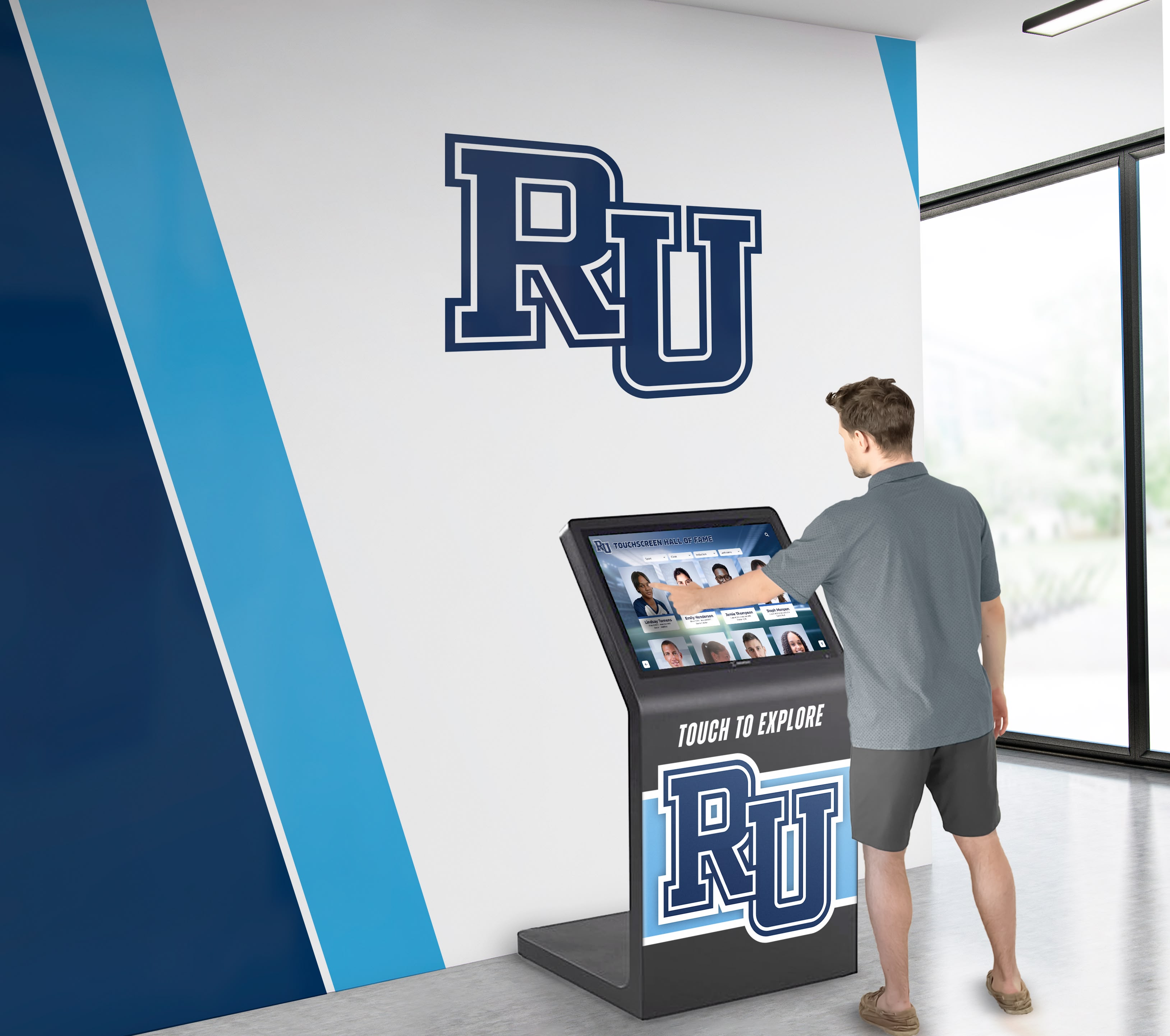
Creating Compelling Alumni Profile Content
Effective profiles transform basic biographical information into engaging narratives that inspire and educate:
Essential Profile Components
Comprehensive profiles include multiple information elements creating complete pictures of alumni achievements:
Biographical Basics Full name and any professional names used, graduation year and class designation, honors or distinctions received during high school, academic achievements and GPA (when appropriate), athletic participation and accomplishments, extracurricular activities and leadership roles, notable teachers or mentors who influenced them, and memorable high school experiences or moments.
Educational Journey Colleges or universities attended with degrees earned, graduate or professional schools, specialized training or certifications, academic honors received in higher education, and how high school prepared them for educational success.
Career Progression Current professional position and organization, career history with key positions and dates, major professional accomplishments and milestones, awards and recognition received, innovations or contributions to their field, and leadership roles or board service.
Personal Reflections Advice for current students, reflections on how high school shaped their path, favorite high school memories or teachers, challenges overcome and lessons learned, and current passions or focus areas.
Multimedia Assets Professional headshots, action photos or workplace images, video interviews or messages to students, historical photos from high school years, news clips or media coverage, and award or achievement documentation.
Writing Engaging Narrative Profiles
Transform factual information into compelling stories that create emotional connections:
Open with Impact Lead paragraphs should immediately engage readers with the most notable achievement, an interesting fact or accomplishment, context explaining significance, or a compelling personal detail. Strong openings hook readers and encourage continued reading.
Tell Complete Stories Effective profiles follow narrative arcs—high school foundation and early influences, educational pathway and key decisions, career development and progression, major achievements and their significance, challenges overcome demonstrating resilience, impact on their field or community, and current work or focus areas.
Include Human Elements Balance professional achievements with personal dimensions—challenges or obstacles overcome, turning points or pivotal decisions, mentors or supporters who helped, personal values or motivations, family or community connections, and interests beyond professional work.
Connect to Current Students Explicitly relate alumni experiences to current student circumstances, highlight how high school prepared them, include direct advice for students, mention specific teachers or programs that influenced them, and emphasize that alumni faced similar challenges and uncertainties.
End Memorably Closing paragraphs should synthesize the alumni’s impact and legacy, provide inspirational takeaway for readers, include current status or recent developments, and reinforce connections to institutional values.
Guidance on storytelling through digital recognition provides frameworks for crafting profiles that resonate emotionally while effectively communicating achievement significance.
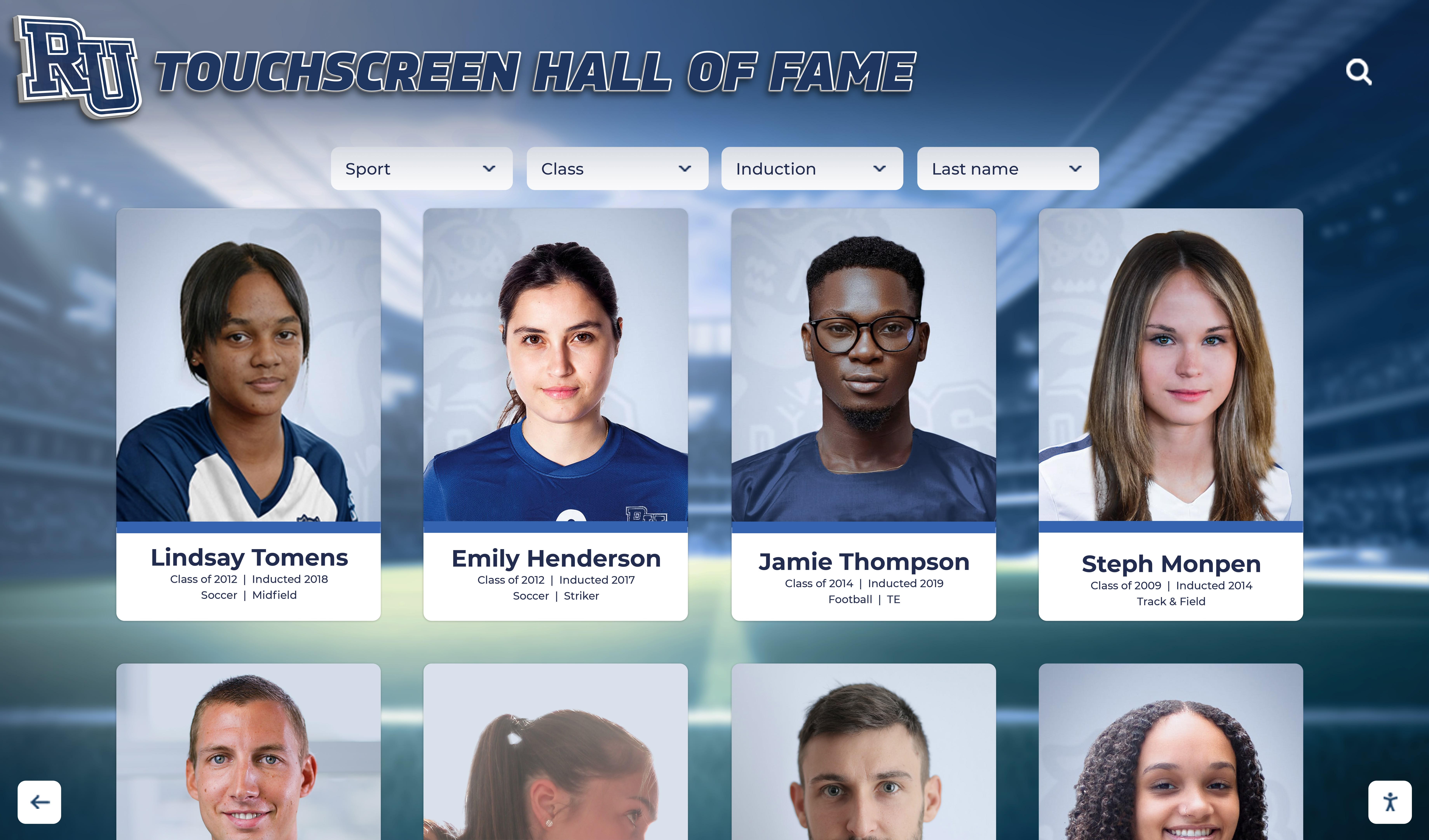
Promoting Your Distinguished Alumni Network
Build awareness and engagement through strategic promotion across multiple channels:
Launch Events and Induction Ceremonies
Formal ceremonies create memorable experiences while generating publicity and community engagement:
Planning Effective Ceremonies Schedule events during high-visibility periods like homecoming, major athletic events, or graduation weekends. Invite honored alumni, their families, current students, faculty, staff, community members, and local media. Create formal programs recognizing each honoree individually. Include speeches from school leaders, distinguished alumni, and potentially student representatives. Provide networking opportunities allowing alumni to connect.
Media Coverage and Publicity Issue press releases to local media outlets. Provide media kits with photos and biographical summaries. Invite journalists to attend ceremonies. Share photos and videos across school communication channels. Feature ceremonies in school newsletters and publications.
Social Media Amplification Create event hashtags encouraging social sharing. Post photos and videos during and after ceremonies. Tag honored alumni and their employers. Encourage attendees to share their own photos. Create highlight reels for future promotion.
Ongoing Communication and Content Marketing
Sustain engagement through regular alumni spotlights and content:
Featured Alumni Series Regularly highlight different distinguished alumni through email newsletters, social media posts, school website features, student newspaper or yearbook profiles, and video documentary series. Rotate featured alumni ensuring diverse representation across all success categories.
Anniversary Celebrations Mark significant milestones—10th, 25th, 50th graduation anniversaries. Highlight new achievements by previously honored alumni. Celebrate major career milestones as they occur. Recognize lifetime achievement for alumni nearing retirement.
Integration with School Programs Feature alumni in career day presentations, virtual or in-person mentorship programs, college counseling as examples of pathways, athletic program promotions highlighting sports alumni, and fundraising communications demonstrating alumni support.
Leveraging Alumni Themselves as Ambassadors
Engaged alumni become powerful advocates promoting their recognition and the school:
Encouraging Personal Sharing Make sharing easy through prominent social buttons on all profiles, pre-written social media posts alumni can customize, downloadable graphics and images for personal use, embed codes for website or blog integration, and email-friendly profile URLs.
Alumni Network Effects Recognized alumni share with professional networks, family members and friends, former classmates and colleagues, industry connections, and social media followers. Each share introduces new audiences to school achievements.
Media Outreach by Alumni Some alumni may proactively share recognition with media contacts, industry publications, professional associations, or personal platforms. This organic media outreach amplifies school visibility at no cost.
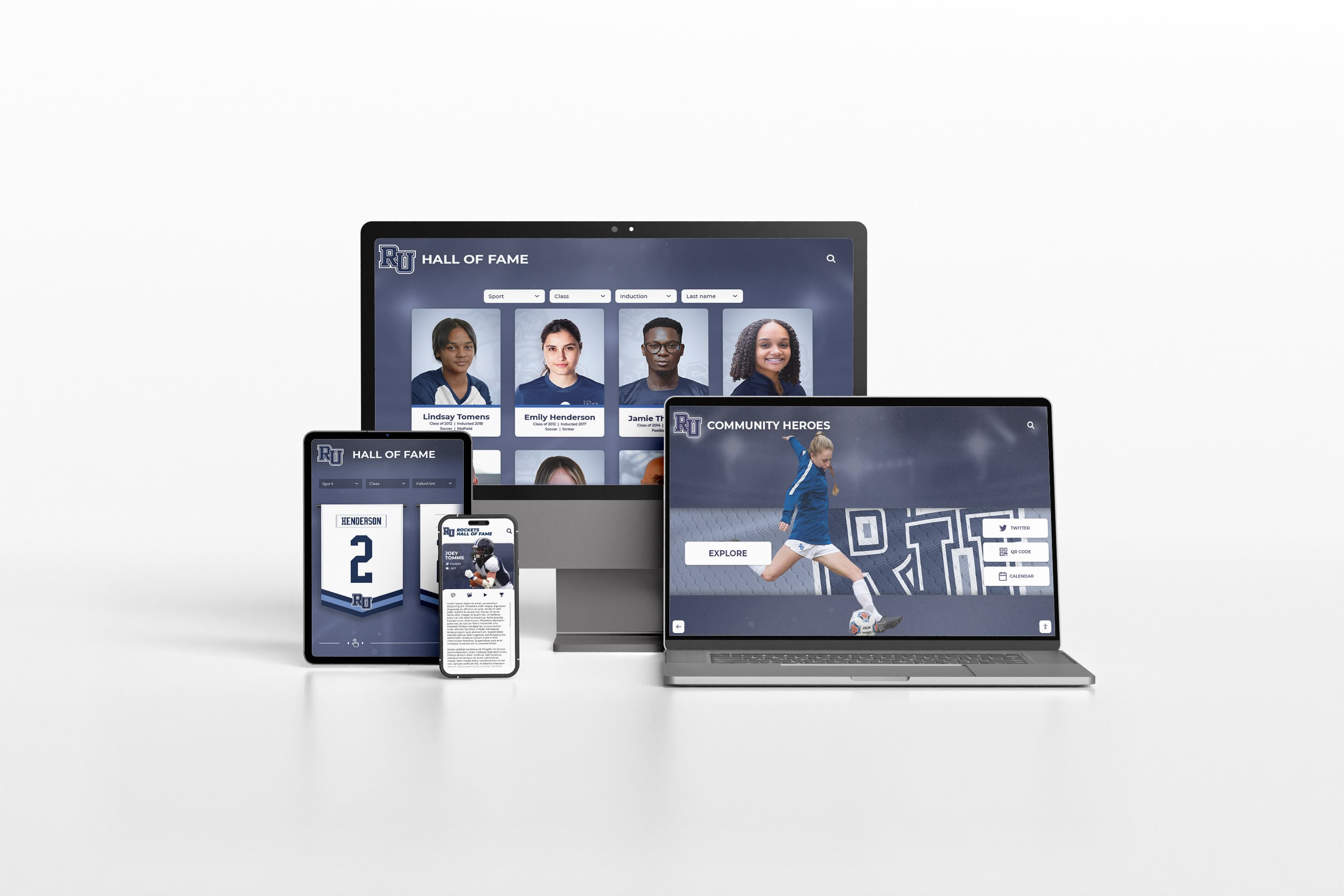
Engaging Current Students with Alumni Success Stories
Transform alumni recognition from passive displays into active learning experiences:
Integrating Alumni into Curriculum
Incorporate distinguished alumni into educational programming:
Career Exploration Activities Use alumni profiles in career research assignments. Invite alumni for career day presentations or panels. Arrange virtual Q&A sessions with alumni in various fields. Assign projects analyzing alumni career paths. Create career pathway visualizations based on alumni trajectories.
Mentorship Program Connections Match students with alumni mentors in fields of interest. Facilitate informational interviews with alumni. Arrange job shadowing opportunities. Enable ongoing digital mentorship relationships. Track student-alumni connections and outcomes.
Real-World Learning Examples Reference alumni achievements in subject-matter teaching. Use alumni business success in economics or entrepreneurship classes. Highlight alumni medical careers in science courses. Feature alumni creative work in arts education. Connect alumni civic service to government or history lessons.
Creating Student Ambassador Programs
Engage students as active participants in alumni recognition:
Student-Led Research Projects Assign students to research distinguished alumni and create content. Have journalism students interview alumni and write profiles. Enable student photographers or videographers to document ceremonies. Let student organizations nominate alumni for recognition.
Alumni Advisory Committees Include student representatives on recognition selection committees. Gather student input on which types of achievements resonate most. Survey students about which alumni inspire them. Involve students in ceremony planning and execution.
Making Recognition Interactive and Relevant
Transform static recognition into dynamic engagement:
Touchscreen Exploration Assignments Assign students to explore interactive alumni directories and write reflections. Create scavenger hunts finding specific information. Have students identify alumni in fields they’re interested in. Require research assignments using alumni database content.
Social Media Student Takeovers Let students manage alumni spotlight social content. Have student athletes highlight athletic alumni. Enable student leaders to feature leadership alumni. Encourage creative students to showcase arts alumni.
Alumni Comparison Activities Challenge students to compare their high school experiences with alumni accounts. Have students trace how specific classes or teachers influenced alumni. Encourage students to identify parallels between their challenges and alumni obstacles.
Understanding best ways to connect with alumni helps schools develop systematic engagement strategies benefiting both alumni and current students.
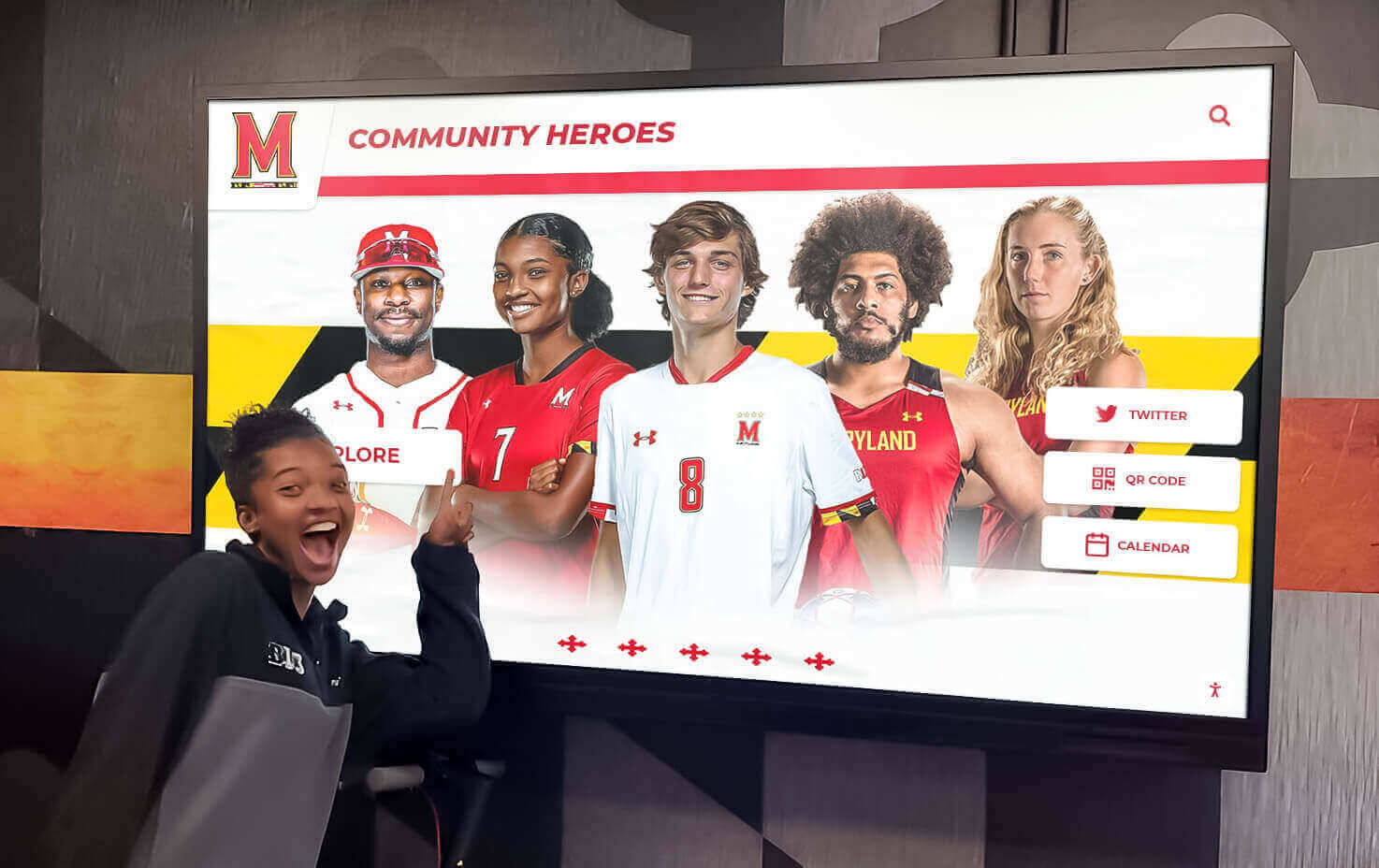
Measuring the Impact of Your Distinguished Alumni Network
Track meaningful metrics demonstrating program value and informing continuous improvement:
Quantitative Success Metrics
Measurable data reveals program reach and engagement:
Audience Engagement Physical display interaction counts (for digital displays with analytics), website traffic and unique visitors, page views per session and time on site, search query volumes and terms, social media reach and engagement, and email open and click rates for alumni content.
Alumni Participation Number of distinguished alumni recognized, nomination submission volumes, alumni attendance at induction ceremonies, alumni who update their own profiles, and alumni who serve as mentors or speakers.
Student Impact Student awareness of alumni measured through surveys, career exploration activities involving alumni research, mentorship relationships established, student attendance at alumni events, and student social media engagement with alumni content.
Institutional Benefits Media mentions and press coverage, prospective family feedback during admissions, alumni association membership and engagement, philanthropic support from recognized alumni, and volunteer participation in school programs.
Qualitative Impact Assessment
Beyond numbers, gather meaningful feedback about program value:
Student Testimonials Collect student reflections on how alumni stories inspired them, influenced career thinking, motivated academic effort, or shaped post-graduation plans. These personal accounts demonstrate impact that statistics cannot capture.
Alumni Feedback Survey recognized alumni about the significance of recognition to them, how recognition affected their connection to school, whether they’ve become more engaged since recognition, and their satisfaction with how achievements were honored.
Community Response Monitor community sentiment about the school, media tone and coverage quality, parent satisfaction with school pride, and community volunteerism or support patterns.
Resources on measuring digital recognition success provide comprehensive frameworks for establishing meaningful metrics aligned with recognition program goals.
Overcoming Common Implementation Challenges
Anticipate and address typical obstacles preventing successful alumni recognition programs:
Limited Historical Information
Many schools struggle to locate comprehensive information about older alumni:
Solution Strategies Start with recent graduates where information is readily available. Phase in historical alumni systematically rather than attempting comprehensive coverage immediately. Leverage class reunion momentum to gather information from specific graduation years. Engage community historians or long-time staff with institutional memory. Implement crowdsourcing allowing community members to submit alumni information. Accept that some profiles will be less complete while documenting what you can.
Resource Constraints and Competing Priorities
Budget and staff limitations affect many schools:
Solution Strategies Begin with modest programs honoring small initial groups. Leverage technology platforms offering affordable solutions for small schools. Recruit volunteer committees sharing research and content development work. Seek alumni donations specifically funding recognition programs. Phase implementation over multiple budget cycles. Focus resources on highest-impact elements rather than attempting comprehensive programs immediately.
Maintaining Content Currency
Keeping alumni information current requires ongoing effort:
Solution Strategies Enable alumni self-service profile updates through web portals. Establish regular update cycles around reunion years. Monitor news and social media for alumni achievement updates. Assign staff or volunteers to maintain currency. Prioritize updating most-viewed or most-significant profiles. Acknowledge that perfect currency across all profiles is unrealistic.
Selection Criteria Disputes
Disagreements about who merits recognition can create tension:
Solution Strategies Establish transparent criteria before beginning selection. Document selection rationale for accountability. Ensure diverse committee representation. Communicate that recognition celebrates specific achievements, not comparative worth. Create multiple recognition categories ensuring broad representation. Maintain respectful processes honoring all nominees even when not selected. Be transparent that selection involves subjective judgment within objective criteria.
Conclusion: Building Recognition Programs That Inspire Generations
Distinguished alumni networks transform abstract educational rhetoric into concrete evidence that hard work, dedication, and quality education create extraordinary opportunities. When high schools systematically celebrate graduates who become professional athletes, business leaders, medical professionals, and distinguished achievers across every field, they accomplish multiple valuable objectives simultaneously.
Current students gain tangible role models demonstrating diverse pathways to success. Alumni feel valued and maintain stronger connections with schools that honor their achievements. Schools enhance reputations through association with distinguished graduates. Communities take pride in local success stories. And institutional culture strengthens around celebration of excellence and achievement.
The most effective recognition programs combine clear selection criteria with systematic nomination processes, comprehensive information gathering, engaging profile development, modern display technology, and strategic promotion. Whether implementing traditional physical displays, cutting-edge digital platforms, or hybrid approaches combining both elements, the fundamental goal remains constant: celebrating accomplishment in ways that inspire future excellence.
Educational institutions ready to honor distinguished alumni have more options than ever before. Purpose-built solutions like Rocket Alumni Solutions provide comprehensive platforms designed specifically for schools, combining intuitive content management, impressive display hardware, and proven implementation support that helps schools create recognition programs delivering lasting value for decades.
The graduates who become professional athletes inspiring student-athletes, business leaders demonstrating entrepreneurial possibility, medical professionals modeling healing careers, and distinguished achievers across every field deserve recognition honoring their accomplishments. Current students deserve exposure to these diverse success models. And schools deserve recognition programs that celebrate achievement while strengthening pride, engagement, and institutional culture.
Ready to build your distinguished alumni network? Whether starting from scratch or enhancing existing recognition, modern digital platforms enable schools of any size to showcase alumni achievements professionally, comprehensively, and affordably—creating living testaments to educational excellence that inspire every student walking your hallways today.




































